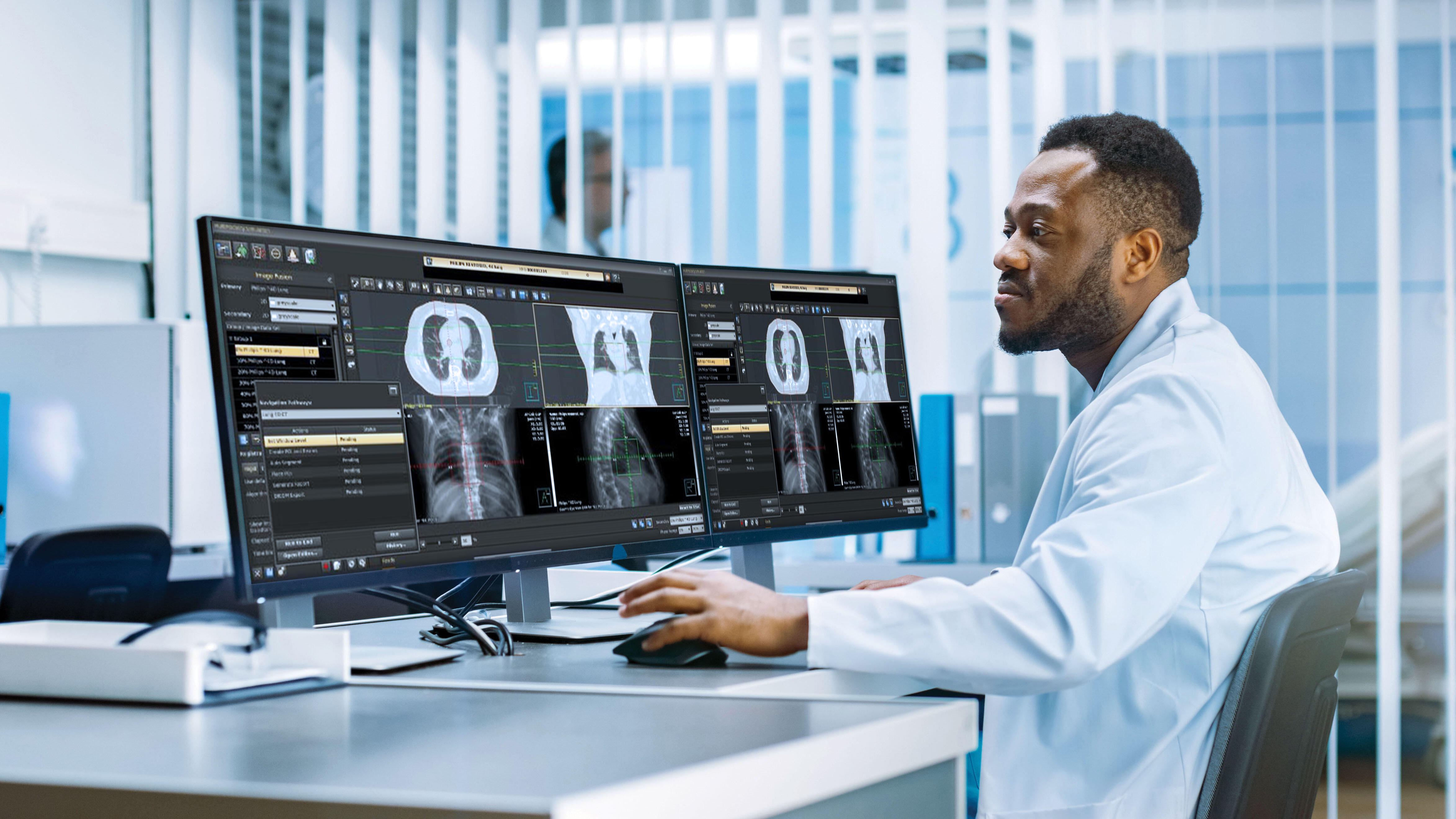Philips Highlights RT Simulation Workspace, Partnership with Elekta at ASTRO 2021
 Royal Philips is showcasing innovations that can help improve cancer care across the patient journey at the ASTRO 2021 annual meeting. Philips will demonstrate its Multimodality RT Simulation Workspace, an application that provides a vendor-agnostic single space for simulation, multimodality image fusion and contouring. MR and CT imaging systems tailored for the needs of radiation therapy will also be showcased. Philips will also highlight its deepened strategic partnership with Elekta to support the ambition of providing clear care pathways and predictable outcomes for every cancer patient.
Royal Philips is showcasing innovations that can help improve cancer care across the patient journey at the ASTRO 2021 annual meeting. Philips will demonstrate its Multimodality RT Simulation Workspace, an application that provides a vendor-agnostic single space for simulation, multimodality image fusion and contouring. MR and CT imaging systems tailored for the needs of radiation therapy will also be showcased. Philips will also highlight its deepened strategic partnership with Elekta to support the ambition of providing clear care pathways and predictable outcomes for every cancer patient.
“Enhanced through strategic partnerships, our end-to-end oncology solutions span the patient pathway and the multidisciplinary specialties, integrating data and enabling collaboration, all with the aim of improving patient and staff satisfaction and outcomes,” said Ardie Ermers, General Manager Oncology Solutions at Philips. “At this year’s ASTRO meeting we’re highlighting how we’re connecting clinical and operational teams with the information they need to optimize and personalize cancer care.”
With images and data often siloed in different systems, the complexity of image fusion and contouring can lengthen patient time to treatment. Integrating the simulation workflow within Multimodality RT Simulation Workspace, a precision medicine application, is designed to help physicians define tumor volume and surrounding organs-at-risk through a multimodality image platform which connects to both Philips and non-Philips imaging devices or PACS to access image datasets such as CT, MR, PET, Spectral CT and Cone Beam CT. These capabilities will provide better access to a task-centered, vendor neutral solution that efficiently utilizes all available images and data in one central location.
The Philips MR – Ingenia RT XD – MR simulation platform has been designed around the needs of radiation oncology, combining ease-of-use, streamlined integration and versatility. The platform can be easily adapted for different procedures, including external beam radiation therapy (EBRT), proton therapy and brachytherapy planning. The new Couch Top RT XD with Unity indexing further extends the compatibility between the Philips MR – Ingenia RT XD – and Elekta Unity, supporting consistency in both image quality and imaging and positioning workflows that enhance reproducibility, help accelerate learning curves and drive continuity across the care path.
The recently-introduced Spectral CT 7500 system delivers high quality spectral images for every patient on every scan 100% of the time to help improve disease characterization, and reduce rescans and follow-ups, all at the same dose levels as conventional scans. Unlocking the clinical value of dual-energy CT for radiation oncology applications, Spectral CT allows for optimization of lesions that may represent cancer. By capturing additional information such as electron density and effective atomic number, Spectral CT enables physicians to quantify physiological processes such as perfusion and ventilation, enhancing treatment planning.
Philips is collaborating with MIM Software to integrate its Contour ProtégéAI next-generation deep learning segmentation on its CT – Big Bore RT – platform, providing automatically segmented ‘Organ at Risk’ segmentation immediately after the simulation exam.
Also being introduced at ASTRO, Multidisciplinary Team Orchestrator virtually connects and securely integrates multi-disciplinary teams and data across the patient cancer journey. Together with Multimodality RT Simulation Workspace, previously-released software applications that advance precision oncology through integrated care and pathway orchestration, and facilitate healthcare professionals in clinical decision support, include: Lung Cancer Orchestrator, a proactive patient management system for lung cancer screening and incidental findings and the orchestration of lung cancer care; Oncology Pathways, created by oncologists for oncologists, covering both medical and the newly-introduced radiation oncology pathways. Customers become collaborators, providing input into the ever-evolving pathways; Genomics Workspace, bringing genomic data alongside disease histology and patient phenotype for a comprehensive biomarker-informed diagnostic and therapeutic picture.